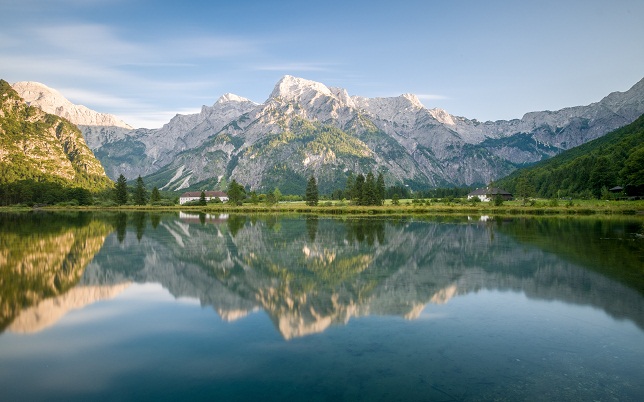Muslim Rulers of India and especially those of Deccan gave special attention to construction and management of water bodies for the purpose of ease of irrigation and reclamation of waste lands. We have been able to collect information only about a few of the tanks and canals out of huge number of water bodies built by the Muslim rulers of India.
Contents
Construction of Water Tanks by Muslim Ruler Iltutmish
In 1230 Shamsuddin Iltutmish got a tank constructed near Delhi. The tank, about two miles in length and one mile in breadth, covered an area of 276 fidans (The fidan was roughly equivalent to 400 sq. yards).
Muhammad ibn Batutah, who had seen the tank, has thus described it.
“Outside Delhi there is a tank which is reported to have been built by Shamsuddin Iltutmish. This tank near the Eidgah (place for Eid prayers) supplies drinking water to the city. About two miles in length and one mile in breadth, the tank stores rain water.
Its western side near the Eidgah is paved with stones which ends up in vaults erected one over the other, with each vault provided with stone stairs reaching the tank water. The top vaults are crowned by cupolas which have enough space for the excursionists to sit inside them and enjoy the sight. In the middle of the tank a two-storied cupola of delicately carved stones has been built.
When the tank is full of water boats are used to reach the central building which has a mosque besides it, where mendicants and monks live. When the tank goes dry, sugarcane, cucumbers, water-melons and sweet musk-melons are cultivated in its bed.”
Construction of Water Tanks by Muslim Ruler Alauddin Khilji
Repairs of certain demolished portions of this tank were undertaken by Alauddln Muhammad Khilji in 1311 after which Firoz Shah again took steps to renovate it. Thereafter no other ruler of Delhi took care of this tank and it fell into disrepair.
Another tank was built by Alauddin Muhammad Khilji in 1296 between Delhi and Akbarabad. Ibn Batutah writes about this tank:
‘‘The tank is surrounded by about 40 cupolas. Nearby is the habitation of musicians and the songsters by the name of Tarababad, which contains a big market, a Jami Mosque and several other mosques. I have been told that even the chantresses of this place perform Tarawih prayers (special long prayers during Ramdan nights) and offer other prayers in congregation. The male singers are also reported to be very punctilious in offering prayers.”
When this tank fell into ruins, Firoz Shah rebuilt it in 1354. He also constructed a beautiful building of a madrasah near it.
Construction of Canals by Muslim Ruler Firoz Shah
In 1355, Firoz Shah took out a 150 mile long canal from river Satluj to Jhajjar. Of the other important canals of Firoz Shah, one carried the waters of Yamuna from Mundi and Sarmorah hills to the arid tracts of Hansi with seven other tributary canals. Thereafter, it was extended to Abasin where the city of Hisar-i-Firoza was founded by him. A big tank was constructed near the city to store water of the canal. ‘
Another canal was dug in 1356 from Khakhar to Hisar Sarasti and Sar Kharrah where the city of Firozabad was founded by Firoz Shah.
Another valuable canal built by Firoz Shah brought the water of Jamuna to his palace-fort of Firozabad at Delhi. Its water was also restored in a big tank.
Yet another work of irrigation, whose author was Firoz Shah, irrigated the intervening tracts of Sirhind, Mansurpur and Sunnam.
Besides cities, mosques, caravanserais, etc. Firoz Shah is credited with the construction of 150 wells, 100 bridges and 5 reservoirs (Fatuhat Firoz Shahi, p. 230 & Cambridge, Vol. lll, p. 175)
Firoz Shah had also taken out a 48 Kms. long canal from the river Jamuna (near Khizarabad) to Sufaidun. The canal was got repaired by Shahabuddin, the Subedar of Delhi during the reign of Akbar and re-named as Nahr-Shahab.
Canals by Muslim Ruler Sultan Zainul Abdin
Of the many canals constructed by Sultan Zainul Abdin in the highland valley of Kashmir, one irrigated the valley of Maran hills and the other taken out of the river Sindh supplied water to his palace in Naushera. Another canal was taken out from Shopian to Zinapur.
Dal lake in Kashmir valley discharges its water into river Jhelum. Sultan Zainul Abdin constructed a dam to conserve and utilize the tail waters of Dal lake through irrigation canals.
A canal constructed earlier to irrigate the lands around Wular lake had proved unfeasible. Sultan Zainul Abdin connected it with the river Yumar to irrigate waste lands.
Ali Mardan Khan took out a canal from river Ravi to Lahore in 1642 during the reign of Shahjahan. This canal, 63 Km. long, was constructed at a cost of Rs. 1 lakh. But as the Emperor thought that the canal was not as useful as he had intended, he appointed Alauddin Tuni to extend it further by 16 Km. to Shalamar which is situate at a distance of 48 Km. from Lahore.
Neher-i-Bihisht
The canal was taken out of Nahr Shahab at Sufaidun and brought to the Red Fort in 1645. This canal passed through the scalloped marble cascade of Moti Mahal, Diwan-i-Khas and Rang Mahal in the Red Fort, was known as Nahr-i-Bihisht. (Athar-us-Sanadid, p. 123)
Neher Akbarabadi Mahal
The canal was constructed by an espouse of Shahjahan, belonging to Akbarabad, at a distance of 8 Km. from Delhi.
A big tank, known by the name of Ibrahim Patan, was constructed In 1553 by Sultan Ibrahim Qutb Shah.
Husain Sagar was built by Husain ibn Asad of Gulbarga, the son-in-law of Sultan Ibrahim Qutb Shah. The tank was constructed in 1558 A.D. at a cost of two lakh Huns (Hun was a gold coin with a par value of three and a half rupees of the time).
In 1559 Ali Adil Shah I brought water to his capital and palace in Bijapur through a big canal from a distance of 39 kms. .
During the reign of Akbar, Maulana Nuruddin of Sufaidun constructed a canal from river Yamuna to irrigate the district of Karnal. Thereafter, he extended the canal by another 80 Km. to irrigate the arid tracts of the neighbouring districts.
Moti Talab
The Moti Talab or Pearl Tank took its name from the crystal water it stored. It was a big tank situated outside the fort on the western portion of the Jalna city in Deccan. A reservoir was constructed during the reign of Malik Ambar who got it built in 1600, at a cost of Rs. 2,35,000 near Aurangabad.
The cistern was constructed under the supervision of Dayar Khan by cutting a huge rock, which was capable of storing rain waters of a catchment area of 3108 hectares around it. The water from the reservoir was diverted into an underground channel, 14 cubits below the surface. This artificial conduit was 3133 cubits long, one cubit in width and two to three cubits deep with a semicircular roof.
This reservoir having the average capacity of storing 28,14,973 Sa (Sa is equal to 3 seers or 3.27 Kg) of water was connected by two conduits of three cubits circumference, taken out from the place known as Chadar Bamba, to the Harslil Canal. A flight of stairs after every 66 to 100 cubits led to the water of the cistern where people could take bath in the pool.
Another underground channel conducted the water of Harsul canal to the Katugilla tank from where it was conveyed to another reservoir near Delhi Gate. It was then taken to an another storage in Shahganj and thereafter supplied through underground culverts to the city.
This water supply showing an amazing mathematical precision and technical skill was constructed at a time when normally wells, tanks and canals were the only means for irrigation and supply of drinking water.
During the reign of Abdullah Qutb Shah, Sultan of Golconda, Mir Muhammad Saeed Urdistani Mun’im Khan-i- Khana constructed a huge tank at Hyderabad in 1649.
Neher Harsul
It was constructed at Aurangabad by Nawab Qamruddin Khan. After it fell into disrepair it was renovated, according to records in Hadiqatul Alam (Mir Alam:Hadiqatul Alam, Vol. II, p. 185), at a considerable cost by his Minister Mir Alam Khan.
Neher Ibrahim Patan
It was taken out during the reign of Asaf Jahi rulers of Hyderabad at a cost of Rs. 10,56,000. The canal was 90 Km. long and drained its water in the famous Ibrahim Patan tank built by Sultan Ibrahim Qutb Shah.
Neher Malkapur
The canal was also built during the reign of Asaf Jahi rulers. It was taken out of the river Musa and conveyed its water to Husain Sagar after covering a distance of 52 Kms.
Mir Alam Sagar
A big tank in Hyderabad, was built by Abul Qasim ibn Razi Husaini Tustri, a minister of Asaf Jahi rulers and popularly known as Mir Alam.
Umda Sagar
It was constructed by Nawab Bashir-ud-daula in 1890. He also held the rank of minister in Hyderabad and his full name was Muhammad Mazharuddin ibn Muhammad Sultanuddin ibn Fakhruddin Umri.
Scores of Unrecorded Water Works by Indian Muslims
Ghiyathuddin Tughluq constructed a number of canals which find a mention in the annals of his time, but unfortunately nothing about their location and other details have been given by the historians. Accordingly we have not been able to throw light on these works.
Sultan Firoz Shah constructed fifty canals but only six of them have been mentioned by the chroniclers.
Similarly, Babar got a number of canals constructed in Agra. Sultans of the earlier Muslim period and those of Deccan gave special attention to the means of irrigation for purposes of reclamation of waste lands.
However, the historical accounts of the time seldom give any details of these works and make only a passing reference to them. Therefore we have to content ourselves with mentioning only those works of which we have been able to find any detailed account.

